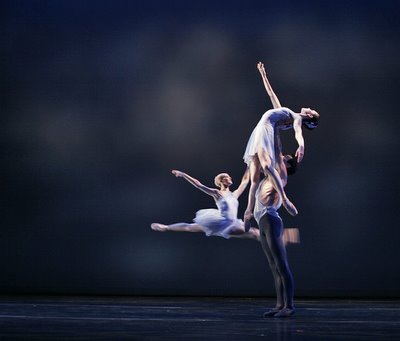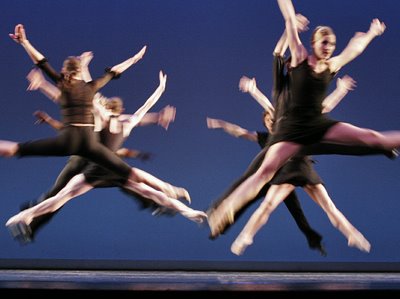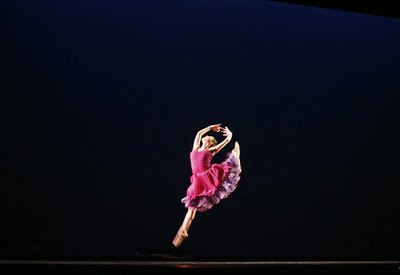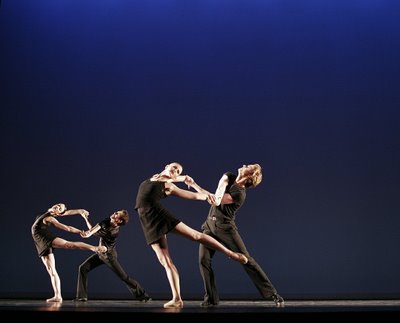Elsie de Wolfe Would Weep
Nowadays you have to book early to get a table at Lady Mendl, the unmarked tearoom and curiosity that opened in 1994 at Irving Place, near Gramercy Park. It’s easy to forget that there are houses on the avenue there, and go looking for The Inn at Irving near the house where Washington Irving lived for a time, which lies diagonally across.
Picture of Lady Mendl tearoom interior from teamap.com
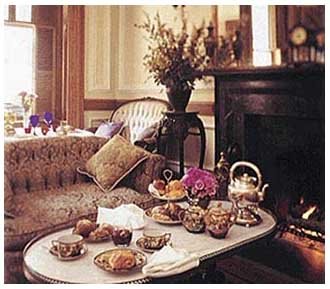
The second townhouse of the pair (built in 1834 without ornamental effusion) has been added to expand the Inn above, so the entrance to Lady Mendl now spans the two first floors and creates an impression of spaciousness. There's a little lobby with a round table loaded with a giant vase of flowers, behind which a congenial receptionist, who will direct you to a separate place for coats, is found seated at a tidy little bureau plat. The decoration sort of goes with the millwork that was probably added late in the nineteenth century, though it would probably make both Elsie de Wolfe (aka Lady Mendl) and Syrie Maugham, her rival and co-conspirator in painting the world’s woodwork white, choke and gag. It’s a puzzle why the designers of the tearoom missed this well-known fact about her position on these matters when there is a huge and well preserved example of Elsie de Wolfe’s work at 62nd and Park (yes, she did the new building too). This is not where she lived wth Miss Marbury either. Anyhow, looking around at the busy patterning, the intentionally mixed, sometimes tufted, and otherwise variously upholstered armchair seating, the presence of embroidery, plant stands, and other Late Victorian accoutrements, and also at the dreadful, chunky millwork stained either pale pine or somewhere between mahogany and ebony, the confused total effect somewhat endearing in its earnestness, it’s not hard to see what made Edith Wharton despair and head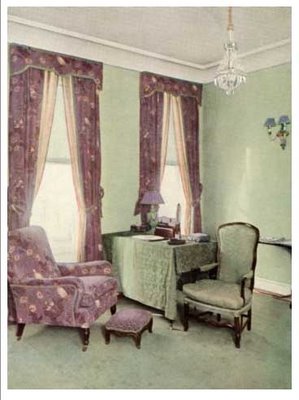 for the Berkshires to vent.
for the Berkshires to vent.
Leaving Victoriana: Interior by Elsie de Wolfe, picture from vintage
designs.com
At three in the afternoon, the tables are laid more or less for dinner, and the menu announces that High Tea is forthcoming. Unaccountably, this starts with a mesclun salad, which might encourage you to believe that a New York variation on High Tea, with patés and cheeses, if not pigeon pie and Scotch Woodcock, could soon appear, never mind the time of day -- but you would be wrong. Instead, regular afternoon tea is rendered as a series of courses after the salad and a change of plates. This means if you don't eat your smoked salmon and cucumber sandwiches, you won't get your tiny scones with all that clotted cream and jam, and if you don't eat up your scones you can't have your pate feuilleté or paté au choux.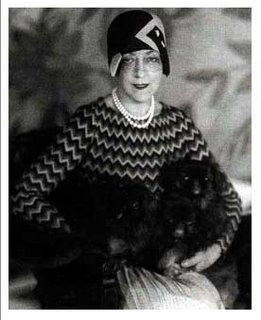 While stuffing oneself, there is a selection of teas, including infusions that are no relative of tea. Lady Mendl, who famously said, “I don’t take soup. You can’t build a meal on a lake,” would probably have scorned all of it in favor of moving along quickly towards the cocktail hour and a Pink Lady.
While stuffing oneself, there is a selection of teas, including infusions that are no relative of tea. Lady Mendl, who famously said, “I don’t take soup. You can’t build a meal on a lake,” would probably have scorned all of it in favor of moving along quickly towards the cocktail hour and a Pink Lady.
Nevertheless, the service is constant and smiley without being overbearing, and it is tempting to overstay one’s welcome instead of running away to Payard or the new Sant Ambroeus downtown or Teany. Still and all, New York's answer to High Tea and more High Tea is Sunday Brunch, not this.
Above: Picture of Elsie de Wolfe from NYSD
 Lady Mendl in later years, not taking tea. Picture from atwaterkent.com
Lady Mendl in later years, not taking tea. Picture from atwaterkent.com
Picture of Lady Mendl tearoom interior from teamap.com

The second townhouse of the pair (built in 1834 without ornamental effusion) has been added to expand the Inn above, so the entrance to Lady Mendl now spans the two first floors and creates an impression of spaciousness. There's a little lobby with a round table loaded with a giant vase of flowers, behind which a congenial receptionist, who will direct you to a separate place for coats, is found seated at a tidy little bureau plat. The decoration sort of goes with the millwork that was probably added late in the nineteenth century, though it would probably make both Elsie de Wolfe (aka Lady Mendl) and Syrie Maugham, her rival and co-conspirator in painting the world’s woodwork white, choke and gag. It’s a puzzle why the designers of the tearoom missed this well-known fact about her position on these matters when there is a huge and well preserved example of Elsie de Wolfe’s work at 62nd and Park (yes, she did the new building too). This is not where she lived wth Miss Marbury either. Anyhow, looking around at the busy patterning, the intentionally mixed, sometimes tufted, and otherwise variously upholstered armchair seating, the presence of embroidery, plant stands, and other Late Victorian accoutrements, and also at the dreadful, chunky millwork stained either pale pine or somewhere between mahogany and ebony, the confused total effect somewhat endearing in its earnestness, it’s not hard to see what made Edith Wharton despair and head
 for the Berkshires to vent.
for the Berkshires to vent.Leaving Victoriana: Interior by Elsie de Wolfe, picture from vintage
designs.com
At three in the afternoon, the tables are laid more or less for dinner, and the menu announces that High Tea is forthcoming. Unaccountably, this starts with a mesclun salad, which might encourage you to believe that a New York variation on High Tea, with patés and cheeses, if not pigeon pie and Scotch Woodcock, could soon appear, never mind the time of day -- but you would be wrong. Instead, regular afternoon tea is rendered as a series of courses after the salad and a change of plates. This means if you don't eat your smoked salmon and cucumber sandwiches, you won't get your tiny scones with all that clotted cream and jam, and if you don't eat up your scones you can't have your pate feuilleté or paté au choux.
 While stuffing oneself, there is a selection of teas, including infusions that are no relative of tea. Lady Mendl, who famously said, “I don’t take soup. You can’t build a meal on a lake,” would probably have scorned all of it in favor of moving along quickly towards the cocktail hour and a Pink Lady.
While stuffing oneself, there is a selection of teas, including infusions that are no relative of tea. Lady Mendl, who famously said, “I don’t take soup. You can’t build a meal on a lake,” would probably have scorned all of it in favor of moving along quickly towards the cocktail hour and a Pink Lady.Nevertheless, the service is constant and smiley without being overbearing, and it is tempting to overstay one’s welcome instead of running away to Payard or the new Sant Ambroeus downtown or Teany. Still and all, New York's answer to High Tea and more High Tea is Sunday Brunch, not this.
Above: Picture of Elsie de Wolfe from NYSD
 Lady Mendl in later years, not taking tea. Picture from atwaterkent.com
Lady Mendl in later years, not taking tea. Picture from atwaterkent.com









